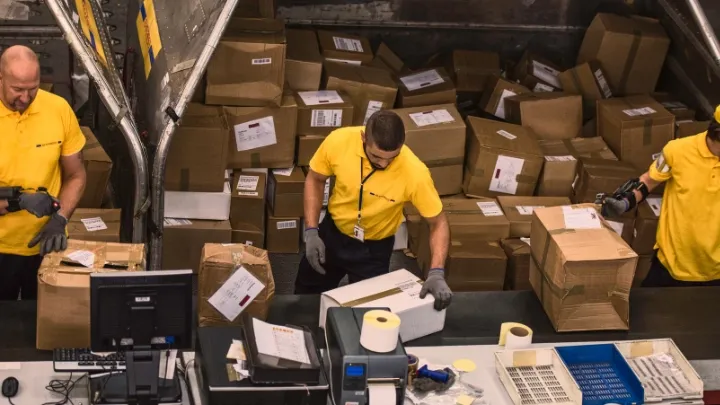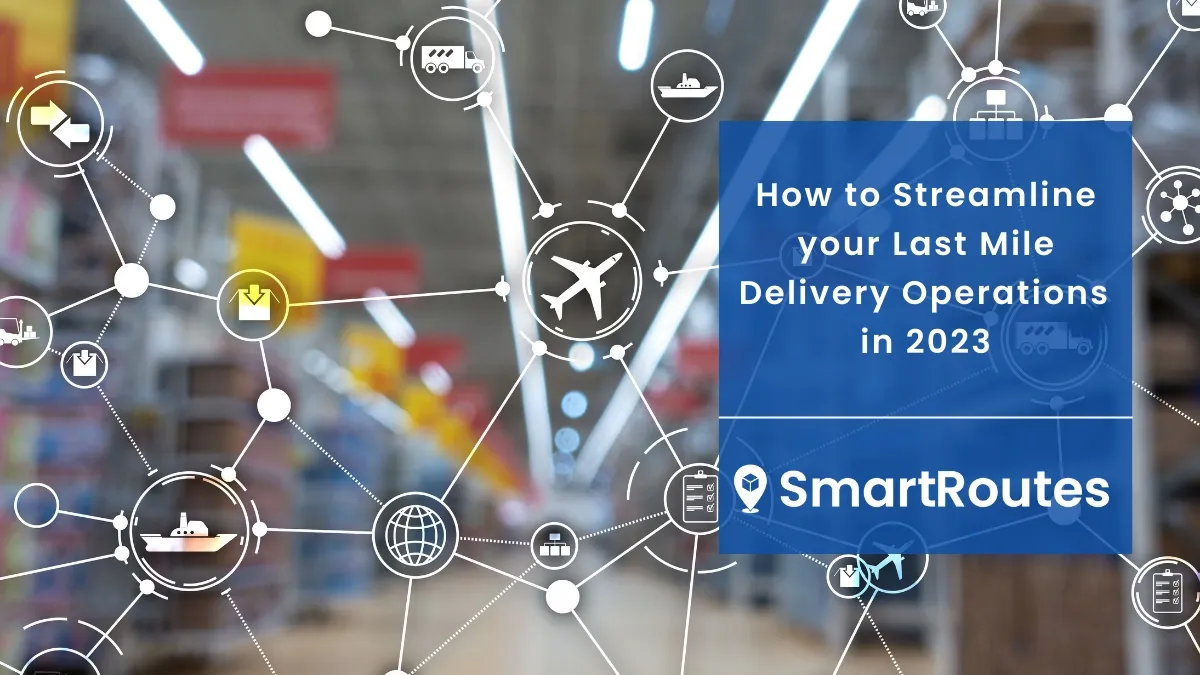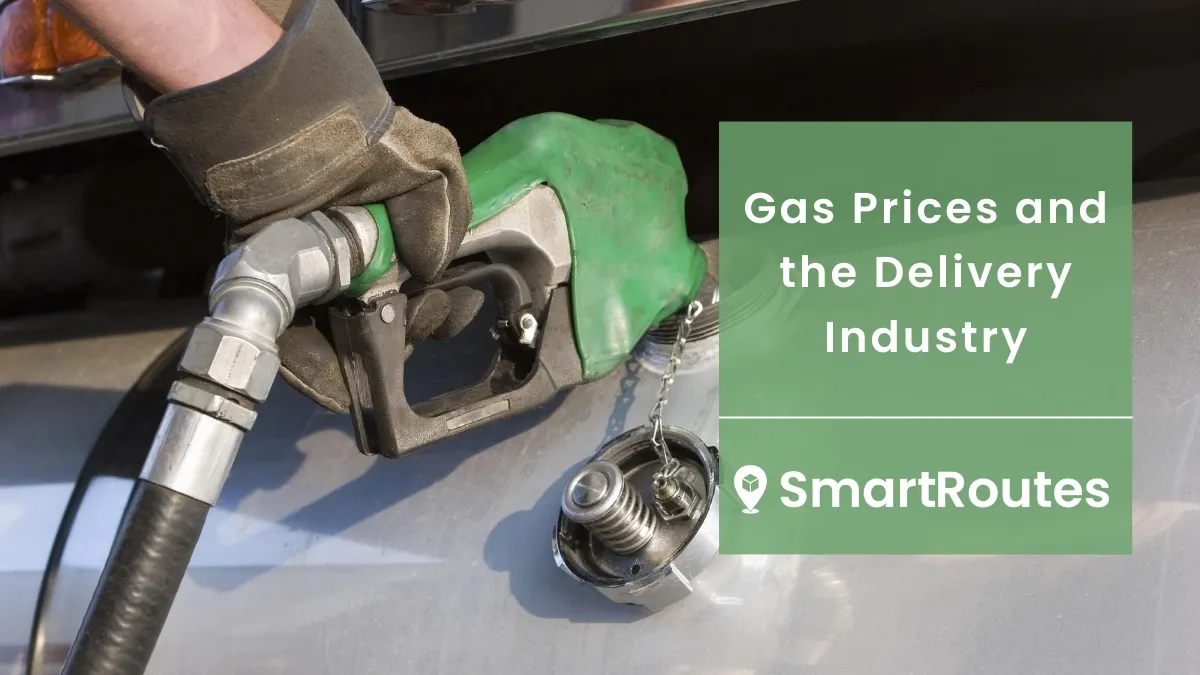8 Ways to Reduce Delivery Costs
Looking to reduce your delivery costs? Check out these 8 effective strategies and techniques, including negotiating carrier rates, using lightweight packaging, optimizing delivery routes and utilizing local fulfillment centers.

Reducing delivery costs is a crucial aspect of running a successful business, as it directly affects profitability and customer satisfaction. The cost of delivering goods to customers can be a significant expense for businesses, especially those that operate in highly competitive markets. To stay ahead of the competition, it is important to explore various strategies and techniques that can help to reduce delivery costs.
In this blog post, we will discuss some of the most effective ways to reduce delivery costs, from optimizing delivery routes to utilizing local fulfillment centers. By implementing these strategies, businesses can not only reduce their costs but also improve their overall delivery efficiency and customer satisfaction.
Evaluate your delivery strategy
To reduce delivery costs, it is important to start by assessing your current delivery strategy. This means taking a closer look at the mode of transportation, frequency and destinations that you currently use for deliveries. Once you have a clear understanding of your current strategy, you can then consider the costs of each aspect and identify areas that can be optimized to reduce expenses.
For example, if you are currently using a particular mode of transportation that is expensive, you may want to consider alternative options such as using a different carrier or switching to a more cost-effective mode of transportation. Similarly, if you are making frequent deliveries to certain destinations, you may be able to consolidate these deliveries to reduce the number of trips required and lower transportation costs.
By evaluating your delivery strategy, you can identify areas that are driving up costs and develop a plan to optimize your strategy for maximum cost savings. This can include adjusting delivery frequencies, optimizing routes or reevaluating your transportation options. The key is to be open to making changes and finding ways to reduce delivery costs without compromising the quality of your deliveries.
SmartRoutes Route Planning Software
Streamline your entire delivery process, all from one platform

8 ways to reduce delivery costs
1) Negotiate rates with carriers
When it comes to reducing delivery costs, negotiating shipping rates with carriers is one of the most effective strategies that businesses can implement. By negotiating rates with your carrier, you can potentially reduce shipping costs by a significant amount, which can have a positive impact on your bottom line.
To negotiate rates with carriers, it's important to leverage your shipping volume and establish a long-term relationship with your carrier. This means demonstrating that you have a consistent and substantial shipping volume, which can help you to negotiate better rates based on the volume of business that you bring to the carrier.
Additionally, it can be helpful to research other carriers and compare rates and services to ensure that you are getting the best possible rates. This can also provide leverage in negotiations, as carriers may be willing to offer better rates to retain your business.
2) Use lightweight packaging materials
One of the most effective ways to reduce delivery costs is by using lightweight packaging materials. Shipping costs are often calculated based on the weight and size of a package and lighter packages require less fuel to transport, which can result in significant cost savings.
When selecting lightweight packaging materials, it's important to consider the durability and protective properties of the materials. While lightweight materials can help to reduce shipping costs, it's important to ensure that the materials are still able to protect the contents of the package during shipping.
Using lightweight packaging materials can also have environmental benefits. By reducing the weight of packages, businesses can help to reduce their carbon footprint and contribute to a more sustainable shipping industry.
3) Reduce unnecessary packaging
Another effective way to reduce delivery costs is by reducing unnecessary packaging. By using minimalistic packaging materials that still provide adequate protection for products, businesses can reduce the size and weight of shipments, which can result in lower shipping costs.
One way to reduce unnecessary packaging is to evaluate the materials that are currently being used and identify areas where excess packaging can be eliminated. For example, if a product is already packaged in a protective box or container, additional packaging may not be necessary. Additionally, using smaller packaging materials can reduce the overall size and weight of shipments, which can lower shipping costs.

Another way to reduce unnecessary packaging is to consider alternative packaging materials, such as biodegradable or compostable materials. These materials can provide adequate protection for products while also reducing the environmental impact of packaging.
4) Combine orders to reduce the number of shipments
Another effective way to reduce delivery costs is by combining orders into a single shipment. This strategy can help to reduce transportation costs by reducing the number of shipments that need to be made. This can be particularly effective for businesses that have multiple orders going to the same location.
To implement this strategy, businesses can monitor their orders and identify opportunities to combine orders into a single shipment. This can involve holding orders until multiple orders are ready to be shipped to the same location, or offering incentives for customers to place larger orders.
To effectively combine orders, businesses should also consider the timing of shipments and the logistics of combining multiple orders into a single shipment. This can involve coordinating with customers to ensure that they are able to receive the combined shipment at a convenient time.
5) Optimize your delivery routes
Another effective way to reduce delivery costs is by optimizing delivery routes. By using route planning software, businesses can identify the most efficient routes for their deliveries, which can help to reduce transportation costs and improve delivery times.
Route planning software can analyze factors such as traffic patterns, delivery locations and delivery schedules to identify the most efficient routes for deliveries. By eliminating unnecessary detours and optimizing the order of deliveries, businesses can reduce the time and resources required for delivery, resulting in lower transportation costs.
In addition to reducing transportation costs, optimizing delivery routes can also help to improve customer satisfaction by improving on time delivery and reducing the likelihood of missed deliveries. This can help to build customer loyalty and drive repeat business.
6) Encourage customers to pick up their orders
Encouraging customers to pick up their orders is another effective strategy for reducing delivery costs. By offering customers the option to pick up their orders in person, businesses can eliminate the need for shipping.

Offering pickup options can also be a convenient option for customers who prefer to pick up their orders in person. This can be particularly effective for businesses that have a physical storefront or warehouse, as customers can easily stop by to pick up their orders on their own schedule. To encourage customers to pick up their orders, businesses can offer incentives such as discounts or free gifts. This can help to incentivize customers to choose the pickup option, which will ultimately reduce shipping costs for the business.
7) Utilize local fulfillment centers
Utilizing local fulfillment centers is another effective strategy for reducing delivery costs. By storing and shipping products from a location closer to your customers, businesses can reduce transportation costs and improve delivery times. This is because local fulfillment centers can often offer faster and more cost-effective shipping options than shipping products from a centralized location.
To utilize local fulfillment centers effectively, businesses should first identify the areas where their customers are located and find a local fulfillment center that can service those areas. This may involve working with a third-party logistics provider (3PL) that specializes in local fulfillment and can help manage inventory, fulfillment and shipping operations.
8) Offer flexible delivery options
Offering flexible delivery options is another effective way to reduce delivery costs.
One way to offer flexible delivery options is to provide same-day or next-day delivery services. By partnering with local couriers or delivery companies, businesses can provide fast and cost-effective delivery options to customers within a certain radius of their location. This can be particularly effective for businesses in densely populated areas, where same-day or next-day delivery can be delivered more efficiently.
Another option is to offer delivery time slots or delivery windows. By allowing customers to choose a specific time and date for delivery, businesses can improve first-time delivery success rates, reducing the need for re-deliveries or returns. This can ultimately lead to cost savings, as well as improved customer satisfaction.
It is important to note, however, that offering flexible delivery options can increase operational complexity and may require additional resources. Businesses should carefully consider the costs and benefits of offering these options before implementing them.
Use technology to streamline operations
Technology has revolutionized the delivery industry, providing tools and software that help businesses streamline their operations and reduce delivery costs. Here are some ways that technology can improve delivery operations:
Real-time tracking: Using GPS technology, businesses can monitor deliveries and ensure that they are on schedule. This can also help to reduce delivery times and increase customer satisfaction.
Automation: Automation can help to eliminate manual processes and reduce errors, which can result in cost savings for businesses. For example, automated order processing can help to reduce labor costs and improve order accuracy.
Mobile apps: Mobile apps can help drivers to navigate delivery routes and provide real-time updates to customers. This can help to improve delivery accuracy and reduce the risk of missed deliveries.
Data analysis: Analyzing delivery data can help businesses identify areas where they can optimize their delivery strategy and reduce costs. For example, by analyzing delivery times and routes, businesses can identify areas where they can improve delivery efficiency and reduce fuel costs.
Efficient route planning: This helps businesses to optimize their delivery routes and eliminate unnecessary detours. Tools and software like SmartRoutes can help businesses to plan the most efficient delivery routes, taking into account factors like traffic, weather, and delivery times. This can help to reduce time and fuel expenses, resulting in significant cost savings for businesses.
By leveraging technology, businesses can streamline their delivery operations, reduce errors, and minimize labor costs.
Reduce Delivery Costs by Implementing SmartRoutes
Reducing delivery costs requires a comprehensive approach that involves evaluating and optimizing various aspects of your delivery strategy. By implementing the strategies mentioned in this blog, businesses can reduce delivery costs, improve customer satisfaction, and gain a competitive edge in the marketplace.
SmartRoutes is a useful tool that can help businesses reduce their delivery costs by saving time and fuel expenses. Why not take advantage of our 7 day free trial to see for yourself? Or book a demo to understand how SmartRoutes can help your specific delivery needs.
Frequently asked questions
1. What are the primary factors affecting delivery costs?
Several factors affect delivery costs, including distance, weight, delivery speed, and packaging. Longer distances, heavier shipments, faster delivery options, and inefficient packaging can all contribute to higher delivery expenses. By optimizing these factors, businesses can effectively reduce their delivery costs.
2. How can route optimization software help reduce delivery expenses?
Route optimization software can significantly reduce delivery expenses by optimizing delivery routes. It calculates the most efficient routes, minimizes fuel consumption, reduces delivery times, and maximizes the number of deliveries per trip. This results in lower operational costs, increased efficiency, and ultimately reduced delivery expenses.
3. Are there eco-friendly delivery options to cut costs and reduce environmental impact?
Yes, there are eco-friendly delivery options that can both cut costs and reduce the environmental impact of deliveries. These options include using electric vehicles, hybrid vehicles, or bike couriers, which are not only cost-effective in the long run but also contribute to a greener and more sustainable delivery process.
4. What strategies can businesses employ to negotiate better shipping rates with carriers?
Businesses can employ several strategies to negotiate better shipping rates with carriers. These include consolidating shipments to increase volume, negotiating long-term contracts, leveraging competitive offers from multiple carriers, and focusing on establishing strong, long-term relationships with carriers. Businesses can also explore various shipping rate discounts and incentives offered by carriers to reduce delivery costs.
If you enjoyed this blog you might also like:








